- From $399 USDUnit price /Unavailable
- From $399 USDUnit price /Unavailable
Description
The Lavender Vera plant, scientifically known as Lavandula angustifolia, is a perennial herb renowned for its aromatic qualities and vibrant purple flowers. This plant is native to the Mediterranean region and has been cultivated for centuries due to its numerous benefits and applications in gardening, aromatherapy, and culinary arts.
One of the primary advantages of incorporating Lavender Vera into a garden is its ability to attract pollinators. Studies indicate that lavender can attract up to 30% more bees and butterflies compared to other flowering plants. This is particularly beneficial for gardeners aiming to enhance biodiversity and support local ecosystems.
Lavender Vera is also known for its drought-resistant properties. Once established, this plant requires minimal water, making it an excellent choice for sustainable gardening practices. Research shows that lavender can thrive in well-drained soils with low moisture levels, which can reduce the overall water consumption in a garden by approximately 20%.
In addition to its ecological benefits, Lavender Vera has a variety of uses in the home. The essential oils extracted from its flowers are widely used in aromatherapy for their calming effects. According to a study published in the Journal of Alternative and Complementary Medicine, inhaling lavender oil can reduce anxiety levels by up to 30% in individuals experiencing stress.
From a culinary perspective, Lavender Vera can be utilized in various recipes, including desserts, teas, and savory dishes. Its unique flavor profile adds a distinct floral note that can enhance the overall taste of a dish. However, it is essential to use culinary-grade lavender to ensure safety and palatability.
When cultivating Lavender Vera, it is crucial to consider its growing conditions. This plant thrives in full sun and well-drained soil, with a pH level between 6.5 and 7.5. Proper spacing is also vital, as mature plants can reach heights of 2 to 3 feet and spread up to 4 feet wide. Adequate air circulation around the plants can help prevent fungal diseases, which are common in humid environments.
In conclusion, the Lavender Vera plant is a valuable addition to any garden. Its ability to attract pollinators, drought-resistant nature, and versatile applications make it an ideal choice for both novice and experienced gardeners. By understanding the specific needs and benefits of Lavender Vera, gardeners can create a thriving and sustainable environment that enhances both aesthetics and functionality.
Follow SeedsNow.com's board Lavendar on Pinterest. - From $399 USDUnit price /Unavailable
Description
The Love-in-a-Mist flower (Nigella damascena) is a striking annual in the buttercup family. Produces 1"-2" blossoms in shades of blue, pink, purple, and white. Fluffy petals surround a horned center seed pod, and the entire flower is surrounded by a “mist” of fern-like foliage that continues along the thin stem that grows 1'-2' tall. An old-fashioned flower with modern appeal.
- Life cycle: Annual
- Bloom season: Spring, summer, fall
- Attracts: Bees, butterflies, beneficial insects, and other pollinators
- Flower meaning: Harmony, love, peace, perplexity, unrequited love
SEED PLANTING TIPS
- Botanical name: Nigella damascena
- Hardiness zones: 2-11
- Planting season: Summer, fall
- Days to maturity: 60-90 days
- Cold stratify: Yes
- Depth to plant seeds: Lightly cover - seeds need light to germinate
- Spacing between plants: 8"-10" apart
- Days to germinate (sprout): 14-21 days
- Germination soil temps: 65F-70F
- Soil types: Sandy, loamy, chalky, moist, well-drained
- Soil pH: 6.0-7.0
- Water needs: Average
- Sun needs: Full sun, part shade
- Frost tolerant: Yes
- Drought tolerant: Yes
- Deer resistant: Yes
Lunaria Silver Dollar (Money Plant) Flowers
From $499 USDUnit price /UnavailableDescription
The Lunaria Silver Dollar (Lunaria annua) is a most unusual biennial. Also called Money Plant, Honesty Plant, and Moonwort, it produces small, fragrant lavender blossoms with a separate seed pod in the form of a flat, translucent disk membrane. When immature, the disk is green. As the plant dies, the seed pod turns as silvery and shimmery as a full moon or silver dollar coin. Grows 2'-3' tall on thin, hairy stems with serrated, heart-shaped foliage. Fantastic in dried floral arrangements or wreaths.
- Life cycle: Herbaceous biennial
- Bloom season: Spring
- Attracts: Bees, butterflies, and other pollinators
- Flower meaning: Honesty, money, sincerity
SEED PLANTING TIPS
- Botanical name: Lunaria annua
- Hardiness zones: 5-9
- Planting season: Summer, fall
- Days to maturity: 2nd year
- Cold stratify: Yes
- Depth to plant seeds: Lightly cover - seeds need light to germinate
- Spacing between plants: 12"-18" apart
- Days to germinate (sprout): 10-14 days
- Germination soil temps: 60F-70F
- Soil types: Sandy, loamy, rich, well-drained
- Soil pH: 6.0-7.5
- Water needs: Average
- Sun needs: Full sun, part shade
- Frost tolerant: Yes
- Drought tolerant: Yes
- Deer resistant: No
- From $299 USDUnit price /Unavailable
Description
The Arroyo Lupine (Lupinus succulentus) is a fast growing annual. It’s in the legume family, so it fixes nitrogen in the soil and is a great companion plant or cover crop for the vegetable garden. Produces dense spires of bright blue pea-sized blossoms with pink or white tips. Grows 2'-4' tall on sturdy stems with daisy-like palmate foliage. Put a few in a pot or plant in wide bands for a striking effect.
If consumed in large quantities, seeds can be toxic to people, pets, and livestock.
- Life cycle: Annual
- Bloom season: Spring, summer
- Attracts: Hummingbirds, birds, bees, butterflies, and other pollinators
- Flower meaning: Abundance, change, growth
SEED PLANTING TIPS
- Botanical name: Lupinus succulentus
- Hardiness zones: 3-7
- Planting season: Spring, fall
- Days to maturity: 1st to 2nd year
- Cold stratify: No
- Depth to plant seeds: Lightly cover - seeds need light to germinate
- Spacing between plants: 12"-24" apart
- Days to germinate (sprout): 15-75 days
- Germination soil temps: 55F-70F
- Soil types: Clay, sandy, loamy, rocky, moist, well-drained
- Soil pH: 6.1-7.8
- Water needs: Average
- Sun needs: Full sun, part shade
- Frost tolerant: Yes
- Drought tolerant: Yes
- Deer resistant: Yes
- From $299 USDUnit price /Unavailable
Description
The Pixie Delight Lupine variety (Lupinus Hartwegll) is a fast growing annual native to Mexico. It’s in the legume family, so it fixes nitrogen in the soil and is a great companion plant or cover crop for the vegetable garden. Produces dense spires of pastel pink, blue, purple, and white tips. Grows 2'-4' tall on sturdy stems with daisy-like palmate foliage. Put a few in a pot or plant in wide bands for a striking effect.
If consumed in large quantities, seeds can be toxic to people, pets, and livestock.
- Life cycle: Annual
- Bloom season: Spring, summer
- Attracts: Hummingbirds, birds, bees, butterflies, and other pollinators
- Flower meaning: Abundance, change, growth
SEED PLANTING TIPS
- Botanical name: Lupinus succulentus
- Hardiness zones: 3-7
- Planting season: Spring, fall
- Days to maturity: 1st to 2nd year
- Cold stratify: No
- Depth to plant seeds: Lightly cover - seeds need light to germinate
- Spacing between plants: 12"-24" apart
- Days to germinate (sprout): 15-75 days
- Germination soil temps: 55F-70F
- Soil types: Clay, sandy, loamy, rocky, moist, well-drained
- Soil pH: 6.1-7.8
- Water needs: Average
- Sun needs: Full sun, part shade
- Frost tolerant: Yes
- Drought tolerant: Yes
- Deer resistant: Yes
- From $299 USDUnit price /Unavailable
Description
The Russell Lupine Mix (Lupinus polyphyllus) is an easy-care perennial. It’s in the legume family, so it fixes nitrogen in the soil and is a great companion plant or cover crop for the vegetable garden. Produces upright stalks of pea-sized blossoms in various shades of blue, pink, purple, red, and yellow with contrasting tips. Grows 1'-3' tall on sturdy stems with daisy-like palmate foliage. Gorgeous in a pot or an entire field.
If consumed in large quantities, seeds can be toxic to people, pets, and livestock.
- Life cycle: Perennial
- Bloom season: Spring, summer
- Attracts: Bees, butterflies, and other pollinators
- Flower meaning: Abundance, change, growth
SEED PLANTING TIPS
- Botanical name: Lupinus polyphyllus
- Hardiness zones: 3-7
- Planting season: Spring, fall
- Days to maturity: 1st or 2nd year
- Cold stratify: No
- Depth to plant seeds: Lightly cover - seeds need light to germinate
- Spacing between plants: 12"-24" apart
- Days to germinate (sprout): 15-75 days
- Germination soil temps: 55-70
- Soil types: Sandy, loamy, moist, well-drained
- Soil pH: 6.0-7.0
- Water needs: Average
- Sun needs: Full sun, part shade
- Frost tolerant: Yes
- Drought tolerant: Yes
- Deer resistant: Yes
Lupine, Texas Bluebonnet Flowers
From $299 USDUnit price /UnavailableDescription
The Texas Bluebonnet Lupine (Lupinus texensis) is so named because the blossoms resemble the bonnets worn by pioneer women. This low-growing annual is in the legume family, so it fixes nitrogen in the soil and is a great companion plant or cover crop for the vegetable garden. Produces upright spikes of pea-sized blossoms in rich blue with white tips, but can also pop up in shades of white, pink, purple, and maroon (“Aggiebonnet”). Grows 1'-1.5' tall on sturdy stems with daisy-like palmate foliage. Spectacular in a pot or blanketing an entire field. The state flower of Texas.
If consumed in large quantities, seeds can be toxic to people, pets, and livestock.
- Life cycle: Annual
- Bloom season: Spring
- Attracts: Bees, butterflies, and other pollinators
- Flower meaning: Abundance, change, growth
SEED PLANTING TIPS
- Botanical name: Lupinus texensis
- Hardiness zones: 3-8
- Planting season: Fall
- Days to maturity: 1st or 2nd year
- Cold stratify: No
- Depth to plant seeds: Lightly cover - seeds need light to germinate
- Spacing between plants: 8"-12" apart
- Days to germinate (sprout): 7-30 days
- Germination soil temps: 55F-70F
- Soil types: Clay, sandy, loamy, silty, rocky, chalky, calcareous, dry, well-drained
- Soil pH: 7.5+
- Water needs: Low - do not overwater
- Sun needs: Full sun
- Frost tolerant: Yes
- Drought tolerant: Yes
- Deer resistant: Yes
Marigold - Crackerjack Mix Flowers
From $499 USDUnit price /UnavailableDescription

- Crackerjack Marigold flowers are big, bright, bold, and beautiful
- Most popular for attracting butterflies, bees, and other beneficial pollinators
- Crackerjack is easy to grow and will grow all summer
- Great for cut flowers and floral arrangements
- Drought tolerant
- Estimated Mature Height is appx. 36" tall.
- Crackerjack Marigold flowers are big, bright, bold, and beautiful
- From $399 USDUnit price /Unavailable
Description
- Sparky Marigold flowers are bright, bold, and beautiful
- Colors range from orange, red, and yellow
- Grows only 12" - 14" tall
- Most popular for attracting butterflies, bees, and other beneficial pollinators
- Sparky is easy to grow and will grow all summer
- Great for cut flowers and floral arrangements
- Sparky Marigold flowers are bright, bold, and beautiful
- From $399 USDUnit price /Unavailable
Description
The common milkweed (Asclepias Syriaca) is a perennial plant native to North America, known for its distinctive clusters of pink to purple flowers and its ecological significance. This plant typically grows to a height of 3 to 4 feet and thrives in a variety of soil types, preferring well-drained, sandy loam. It is commonly found in fields, roadsides, and disturbed areas, making it an adaptable choice for gardeners looking to enhance biodiversity.
Blooms continuously summer through fall, providing migrating monarchs with nectar snacks for their long journey and a place to lay their eggs. Can be grown as an annual in cooler grow zones. Lovely and long-lasting in cut flower arrangements.
- Life cycle: Herbaceous perennial
- Bloom season: Summer, fall
- Attracts: Beneficial insects, hummingbirds, bees, butterflies, and other pollinators
- Flower meaning: Dignity, freedom, rejection, remembrance, solitude
As a medicinal plant, Milkweed has been used internally to treat diarrhea, gonorrhea, intestinal parasites and worms, pneumonia, spleen inflammation, and stomach tumors, and externally to treat bleeding, boils, corns, dermatitis, eye infections, ringworm, skin parasites, snakebites, sores, warts, and wounds.
⚠️ Although Milkweed is known to be safe when used correctly, all parts of the plant are toxic and may even cause death to people, pets, horses, and livestock if ingested in large quantities. The milky sap is a skin irritant. Do not ingest while pregnant or nursing.
⚠️ Medicinal properties are presented as information only, and are not a recommendation or prescription for use. Consult a medical professional before using any plant medicinally.
NOTE: A parasite, Ophryocystis elektroscirrha (OE), travels with monarchs and is deposited on every plant they visit. In warm grow zones where this non-native milkweed does not die back from a killing frost, the OE parasite can build up and harm the caterpillars that feed on the leaves and the butterflies they become. A continuously blooming milkweed may also encourage the monarchs to dally rather than migrate, which interrupts their reproductive cycle. It’s easy to eliminate both dangers, by cutting your plants to the ground at least once per season.
SEED PLANTING TIPS
- Botanical name: Asclepias curassavica
- Hardiness zones: 8-11
- Planting season: Spring, fall
- Days to maturity: 100-120 days
- Cold stratify: No
- Depth to plant seeds: 1/4" deep - Soaking seeds in warm water overnight aids germination.
- Spacing between plants: 1'-2' apart
- Days to germinate (sprout): 10-21 days
- Germination soil temps: 60F-70F
- Soil types: Clay, caliche, sandy, loamy, silty, rocky, chalky, rich, dry, moist, wet
- Soil pH: 6.1-7.5
- Water needs: Average
- Sun needs: Full sun, part shade
- Frost tolerant: No
- Drought tolerant: Yes
- Deer resistant: Yes
More facts about Milkweed:
- The beautiful monarch butterflies rely on milkweed to lay their eggs upon. Sadly, habitats that naturally support monarchs are becoming fewer in number each year. New urban development & chemically treated "big agriculture" are destroying habitats of milkweed all over the United States.
- Sow in early January for first year blooms.
Milkweed, Tropical (Silky Deep Red/Blood Flower) Flowers
From $499 USDUnit price /UnavailableDescription
Silky Deep Red Tropical Milkweed (Asclepias curassavica), also called Blood Flower, is striking in the garden and is a vital host plant for the endangered monarch butterfly. This easy care bushy perennial reseeds easily, isn’t fussy about soil or water, and can grow just about anywhere. Puts out bright, showy 2"-4" flower clusters in brilliant red-orange with yellow centers on slender stems that grow 2'-3' tall. Blooms continuously summer through fall, providing migrating monarchs with nectar snacks for their long journey and a place to lay their eggs. Can be grown as an annual in cooler grow zones. Lovely and long-lasting in cut flower arrangements.
- Life cycle: Herbaceous perennial
- Bloom season: Summer, fall
- Attracts: Beneficial insects, hummingbirds, bees, butterflies, and other pollinators
- Flower meaning: Dignity, freedom, rejection, remembrance, solitude
As a medicinal plant, Milkweed has been used internally to treat diarrhea, gonorrhea, intestinal parasites and worms, pneumonia, spleen inflammation, and stomach tumors, and externally to treat bleeding, boils, corns, dermatitis, eye infections, ringworm, skin parasites, snakebites, sores, warts, and wounds.
⚠️ Although Milkweed is known to be safe when used correctly, all parts of the plant are toxic and may even cause death to people, pets, horses, and livestock if ingested in large quantities. The milky sap is a skin irritant. Do not ingest while pregnant or nursing.
⚠️ Medicinal properties are presented as information only, and are not a recommendation or prescription for use. Consult a medical professional before using any plant medicinally.
NOTE: A parasite, Ophryocystis elektroscirrha (OE), travels with monarchs and is deposited on every plant they visit. In warm grow zones where this non-native milkweed does not die back from a killing frost, the OE parasite can build up and harm the caterpillars that feed on the leaves and the butterflies they become. A continuously blooming milkweed may also encourage the monarchs to dally rather than migrate, which interrupts their reproductive cycle. It’s easy to eliminate both dangers, by cutting your plants to the ground at least once per season.
SEED PLANTING TIPS
- Botanical name: Asclepias curassavica
- Hardiness zones: 8-11
- Planting season: Spring, fall
- Days to maturity: 100-120 days
- Cold stratify: No
- Depth to plant seeds: 1/4" deep - Soaking seeds in warm water overnight aids germination.
- Spacing between plants: 1'-2' apart
- Days to germinate (sprout): 10-21 days
- Germination soil temps: 60F-70F
- Soil types: Clay, caliche, sandy, loamy, silty, rocky, chalky, rich, dry, moist, wet
- Soil pH: 6.1-7.5
- Water needs: Average
- Sun needs: Full sun, part shade
- Frost tolerant: No
- Drought tolerant: Yes
- Deer resistant: Yes
More facts about Milkweed:
- The beautiful monarch butterflies rely on milkweed to lay their eggs upon. Sadly, habitats that naturally support monarchs are becoming fewer in number each year. New urban development & chemically treated "big agriculture" are destroying habitats of milkweed all over the United States.
- Sow in early January for first year blooms.
Nasturtium - Alaska Mix Flowers
From $399 USDUnit price /UnavailableDescription
This variety includes a mix of gold, salmon, orange, and deep red/purple colored flowers.
- Nasturtium flowers are one of the most popular edible flowers grown in home gardens. The petals have a slight peppery taste, and the seeds and leaves are also edible! You can even use the seeds as an alternative to capers.
- Not only are the flowers pretty, Nasturtiums are great companion plants! They are also known to deter aphids, whiteflies, cucumber beetles & more. Learn more >
- Nasturtiums should be planted in the spring for a "summer show". Plant in full sun, and in sandy, well drained soil. Generally, the poorer the soil quality, the more flowers the plant will produce! Deadhead your plants regularly to encourage new blooms, all season long. These flowers will self-seed resulting in more flowers for years to come!
- These are PERFECT for beginner gardeners! These annuals are very easy to grow from seed and can be grown just about anywhere, even places that are susceptible to drought.
- The bright flower petals will liven up any garden, with very little effort! They are also GREAT for planting in hanging baskets or containers.
Nasturtium - Dwarf Jewel Mix Flowers
From $399 USDUnit price /UnavailableDescription
Fragrant, colorful mix of dwarf flowers in a compact plant usually getting no taller than 12 inches.
- Nasturtium flowers are one of the most popular edible flowers grown in home gardens. The petals have a slight peppery taste, and the seeds and leaves are also edible! You can even use the seeds as an alternative to capers.
- Not only are the flowers pretty, Nasturtiums are great companion plants! They are also known to deter aphids, whiteflies, cucumber beetles & more. Learn more >
- Nasturtiums should be planted in the spring for a "summer show". Plant in full sun, and in sandy, well drained soil. Generally, the poorer the soil quality, the more flowers the plant will produce! Deadhead your plants regularly to encourage new blooms, all season long. These flowers will self-seed resulting in more flowers for years to come!
- These are PERFECT for beginner gardeners! These annuals are very easy to grow from seed and can be grown just about anywhere, even places that are susceptible to drought.
- The bright flower petals will liven up any garden, with very little effort! They are also GREAT for planting in hanging baskets or containers.
Nasturtium - Empress of India Flowers
From $399 USDUnit price /UnavailableDescription
Large scarlet blooms will grow on this attractive 1 foot tall, compact plant.
- Nasturtium flowers are one of the most popular edible flowers grown in home gardens. The petals have a slight peppery taste, and the seeds and leaves are also edible! You can even use the seeds as an alternative to capers.
- Not only are the flowers pretty, Nasturtiums are great companion plants! They are also known to deter aphids, whiteflies, cucumber beetles & more. Learn more >
- Nasturtiums should be planted in the spring for a "summer show". Plant in full sun, and in sandy, well drained soil. Generally, the poorer the soil quality, the more flowers the plant will produce! Deadhead your plants regularly to encourage new blooms, all season long. These flowers will self-seed resulting in more flowers for years to come!
- These are PERFECT for beginner gardeners! These annuals are very easy to grow from seed and can be grown just about anywhere, even places that are susceptible to drought.
- The bright flower petals will liven up any garden, with very little effort! They are also GREAT for planting in hanging baskets or containers.
Nasturtium - Glorious Gleam Flowers
From $399 USDUnit price /UnavailableDescription
Semi-trailing plant with fragrant flowers that come in a variety of shades and colors.
Depth to Plant
Spacing Between Plants
Days to Germinate (Sprout)
Germination
Soil TempBest Season to Plant_________
Sun
RequirementSoil
RequirementsGood Plant Companions
Harvest Instructions
1/2" Deep 12" Apart 7-10 Days Approx. 70 degrees F. Early Spring Full Sun Well drained and sandy Roses and most vegetables Harvest blooms regularly to encourage new growth. 
How to Grow & Harvest Nasturtiums When to Plant
Nasturtiums should be planted in the spring for a "summer show" once soil temperatures have reached around 70 degrees F.
- Nasturtium flowers are one of the most popular edible flowers grown in home gardens. The petals have a slight peppery taste, and the seeds and leaves are also edible! You can even use the seeds as an alternative to capers.
- Not only are the flowers pretty, Nasturtiums are great companion plants! They are also known to deter aphids, whiteflies, cucumber beetles & more. Learn more >
- Nasturtiums should be planted in the spring for a "summer show". Plant in full sun, and in sandy, well drained soil. Generally, the poorer the soil quality, the more flowers the plant will produce! Deadhead your plants regularly to encourage new blooms, all season long. These flowers will self-seed resulting in more flowers for years to come!
- These are PERFECT for beginner gardeners! These annuals are very easy to grow from seed and can be grown just about anywhere, even places that are susceptible to drought.
- The bright flower petals will liven up any garden, with very little effort! They are also GREAT for planting in hanging baskets or containers.


How to Plant
Plant in full sun, and in sandy, well drained soil. Generally, the poorer the soil quality, the more flowers the plant will produce! These seeds require darkness to germinate and will do best with planted a half of an inch deep, spaced at least 12" apart. Plants should appear within 7-10 days. These annuals are very easy to grow from seed and can be grown just about anywhere, even places that are susceptible to drought.When to Harvest
Deadhead your plants regularly to encourage new blooms, all season long. These flowers will self-seed resulting in more flowers for years to come!Nasturtium - Peach Melba Flowers
From $399 USDUnit price /UnavailableDescription
This variety produces cream-like, yellow petals with splashes of darker red in the center. Compact in size with deep blue/green foliage.
- Nasturtium flowers are one of the most popular edible flowers grown in home gardens. The petals have a slight peppery taste, and the seeds and leaves are also edible! You can even use the seeds as an alternative to capers.
- Not only are the flowers pretty, Nasturtiums are great companion plants! They are also known to deter aphids, whiteflies, cucumber beetles & more. Learn more >
- Nasturtiums should be planted in the spring for a "summer show". Plant in full sun, and in sandy, well drained soil. Generally, the poorer the soil quality, the more flowers the plant will produce! Deadhead your plants regularly to encourage new blooms, all season long. These flowers will self-seed resulting in more flowers for years to come!
- These are PERFECT for beginner gardeners! These annuals are very easy to grow from seed and can be grown just about anywhere, even places that are susceptible to drought.
- The bright flower petals will liven up any garden, with very little effort! They are also GREAT for planting in hanging baskets or containers.
Nasturtium - Tall Trailing Mix Flowers
From $399 USDUnit price /UnavailableDescription
This fast-growing, vine-like or "trailing" plant can easily reach 10 feet in length by the end of the growing season! Perfect for growing along fences, or above retaining walls. It boasts colorful flowers in many shades of yellow, orange and even occasionally red.
- Nasturtium flowers are one of the most popular edible flowers grown in home gardens. The petals have a slight peppery taste, and the seeds and leaves are also edible! You can even use the seeds as an alternative to capers.
- Not only are the flowers pretty, Nasturtiums are great companion plants! They are also known to deter aphids, whiteflies, cucumber beetles & more. Learn more >
- Nasturtiums should be planted in the spring for a "summer show". Plant in full sun, and in sandy, well drained soil. Generally, the poorer the soil quality, the more flowers the plant will produce! Deadhead your plants regularly to encourage new blooms, all season long. These flowers will self-seed resulting in more flowers for years to come!
- These are PERFECT for beginner gardeners! These annuals are very easy to grow from seed and can be grown just about anywhere, even places that are susceptible to drought.
- The bright flower petals will liven up any garden, with very little effort! They are also GREAT for planting in hanging baskets or containers.
Nasturtium - Whirlybird Flowers
From $399 USDUnit price /UnavailableDescription
This variety produces jewel-toned flowers, dark green foliage, maximum color! These flowers stand straight and will come in shades of red, orange, cream and gold.
- Nasturtium flowers are one of the most popular edible flowers grown in home gardens. The petals have a slight peppery taste, and the seeds and leaves are also edible! You can even use the seeds as an alternative to capers.
- Not only are the flowers pretty, Nasturtiums are great companion plants! They are also known to deter aphids, whiteflies, cucumber beetles & more. Learn more >
- Nasturtiums should be planted in the spring for a "summer show". Plant in full sun, and in sandy, well drained soil. Generally, the poorer the soil quality, the more flowers the plant will produce! Deadhead your plants regularly to encourage new blooms, all season long. These flowers will self-seed resulting in more flowers for years to come!
- These are PERFECT for beginner gardeners! These annuals are very easy to grow from seed and can be grown just about anywhere, even places that are susceptible to drought.
- The bright flower petals will liven up any garden, with very little effort! They are also GREAT for planting in hanging baskets or containers.
- From $399 USDUnit price /Unavailable
Description
The Nodding Catchfly (Silene pendula) is a bushy, vigorous, low-growing annual. So named because small flies and gnats get stuck in the sticky seed pod. Produces clusters of charming pink blossoms with notched petals around a light pink center. Grows 6"-10" tall on a nodding stem with hairy, oval foliage. Beautiful cascading over a hanging basket or stone wall.
- Life cycle: Annual
- Bloom season: Spring, summer
- Attracts: Hummingbirds, bees, butterflies, moths, and other pollinators
- Flower meaning: Gentleness, youthful love
SEED PLANTING TIPS
- Botanical name: Silene pendula
- Hardiness zones: 4-9
- Planting season: Spring, fall
- Days to maturity: 60-90 days
- Cold stratify: Yes
- Depth to plant seeds: Lightly cover - seeds need light to germinate
- Spacing between plants: 8"-12" apart
- Days to germinate (sprout): 7-14 days
- Germination soil temps: 60F-70F
- Soil types: Clay, sandy, loamy, moist, well-drained
- Soil pH: 5.5-6.5
- Water needs: Average
- Sun needs: Full sun, part shade
- Frost tolerant: Yes
- Drought tolerant: Yes
- Deer resistant: Yes
Phacelia, California Bluebell/Desert Bluebell Flowers
From $399 USDUnit price /UnavailableDescription
Phacelia Campanularia, commonly known as the California Bluebell or Desert Bluebell, is a flowering plant that belongs to the Boraginaceae family. This annual herb is native to the southwestern United States and is particularly well-suited for arid and semi-arid regions. Its striking blue flowers, which bloom in spring, make it an attractive choice for gardeners seeking to enhance the aesthetic appeal of their landscapes.
One of the notable characteristics of Phacelia Campanularia is its ability to thrive in poor soil conditions. This plant is often used in xeriscaping, a landscaping method that reduces or eliminates the need for irrigation. Studies indicate that plants like Phacelia Campanularia can reduce water usage by up to 50% compared to traditional landscaping methods. This makes it an ideal choice for environmentally conscious gardeners looking to conserve water resources.
In addition to its drought-resistant qualities, Phacelia Campanularia plays a crucial role in supporting local ecosystems. The flowers are a valuable source of nectar for pollinators, including bees and butterflies. Research has shown that planting native flowering species can increase pollinator populations by as much as 30%. By incorporating Phacelia Campanularia into your garden, you contribute to the health of these essential species and promote biodiversity.
Phacelia Campanularia is also known for its soil improvement properties. As a member of the legume family, it has the ability to fix nitrogen in the soil, enhancing soil fertility. This characteristic can lead to improved growth for neighboring plants, making it a beneficial companion plant in mixed gardens. Studies have demonstrated that intercropping with nitrogen-fixing plants can increase overall crop yields by approximately 20%.
When cultivating Phacelia Campanularia, it is essential to consider its growing conditions. This plant prefers full sun and well-drained soil. It is typically sown directly into the garden in the spring after the last frost. The seeds germinate quickly, often within 7 to 14 days, and the plants reach maturity in about 60 days. Regular deadheading can encourage prolonged blooming and prevent self-seeding, which may be desirable for gardeners looking to maintain control over their garden's layout.
In conclusion, Phacelia Campanularia is not only an aesthetically pleasing addition to any garden but also offers numerous ecological benefits. Its drought tolerance, support for pollinators, and soil-enhancing properties make it a valuable choice for sustainable gardening practices. By incorporating this native flower into your landscape, you can contribute to a healthier environment while enjoying its beauty.
- From $399 USDUnit price /Unavailable
Description
The Lacy Phacelia (Phacelia tanacetifolia), also known as Scorpionweed and Purple Tansy, is a fast-growing, drought-tolerant, cold-hardy annual in the borage family. Produces coiled, whiskered lavender-colored blossoms that look similar to a scorpion tail, fiddlehead, or thistle. Grows 2'-3' tall on thin, hairy stems with lacy foliage. Plant a few or a field, or add a bit of wildness to a cut arrangement. An especially great companion plant in the vegetable garden as it’s quick to bloom, attracts bees and hoverflies, and stores nitrogen which also makes it a good cover crop.
- Life cycle: Annual
- Bloom season: Summer
- Attracts: Hummingbirds, bees, butterflies, beneficial insects, and other pollinators
- Flower meaning: Determination, endurance, resistance, strength
SEED PLANTING TIPS
- Botanical name: Phacelia tanacetifolia
- Hardiness zones: 3-10
- Planting season: Spring, fall
- Days to maturity: 42-55 days
- Cold stratify: No
- Depth to plant seeds: 1/4" deep
- Spacing between plants: 3"-10" apart
- Days to germinate (sprout): 7-21 days
- Germination soil temps: 40F-65F
- Soil types: Sandy, loamy, silty, rocky, chalky, moist, well-drained
- Soil pH: 6.0-8.5
- Water needs: Average
- Sun needs: Full sun
- Frost tolerant: Yes
- Drought tolerant: Yes
- Deer resistant: Yes
- From $399 USDUnit price /Unavailable
Description
Ammi majus, commonly known as Bishop's White Flower, Greater Ammi, or Queen Anne's lace is an annual flowering plant belonging to the Apiaceae family. This plant is native to regions of the Mediterranean and has gained popularity in various parts of the world due to its ornamental value and ecological benefits.
In addition to its aesthetic appeal, Ammi majus has historical significance in traditional medicine. While it is not widely used in modern herbal practices, some cultures have utilized the plant for its potential medicinal properties, including anti-inflammatory and diuretic effects. However, it is essential to approach such uses with caution and consult with a qualified healthcare professional before considering any medicinal applications.
In conclusion, the Ammi majus flower plant is a versatile and attractive addition to any garden. Its ornamental qualities, ecological benefits, and ease of cultivation make it a valuable choice for gardeners seeking to enhance their landscapes while promoting biodiversity. As with any plant, understanding its growth requirements and potential uses can lead to successful cultivation and enjoyment of this beautiful species.
- From $399 USDUnit price /Unavailable
Description
The Scarlet Sage (Salvia coccinea), also called Blood Sage, Texas Sage, and Indian Fire, is a fast-growing, tender perennial in the mint family. Produces dense 10" spikes of small, tubular, bright red fragrant blossoms with long stamens. Grows 1'-3' tall on square stems with hairy, heart-shaped foliage. Can be grown as an annual in colder climates. A striking pop of color in any garden or vase.
The leaves of Scarlet Sage are edible, but the flowers are toxic to people and should not be ingested.
- Life cycle: Herbaceous perennial
- Bloom season: Spring, summer, fall
- Attracts: Hummingbirds, birds, bees, butterflies, and other pollinators
- Flower meaning: Good health, longevity, wisdom
SEED PLANTING TIPS
- Botanical name: Salvia coccinea
- Hardiness zones: 8-10
- Planting season: Spring, fall
- Days to maturity: 65-85 days
- Cold stratify: No
- Depth to plant seeds: Lightly cover - seeds need light to germinate
- Spacing between plants: 6"-12" apart
- Days to germinate (sprout): 7-21 days
- Germination soil temps: 65F-75F
- Soil types: Sandy, loamy, dry, moist, well-drained
- Soil pH: 5.5-7.5
- Water needs: Average
- Sun needs: Full sun, part shade
- Frost tolerant: No
- Drought tolerant: Yes
- Deer resistant: Yes
Snapdragon, GIANT Maximum Mix Flowers
From $399 USDUnit price /UnavailableDescription
- From $399 USDUnit price /Unavailable
Description

Soapwort (Saponaria officinalis) is a beautiful, robust perennial in the carnation family with dark green lance-shaped leaves and light pink star-shaped flowers that have a pleasant floral clove scent. Can grow 1'-2' tall and 12"-18" wide, and prefers cooler weather. The entire plant contains saponins, with the highest concentration in the roots, which make a gentle foamy lather when mixed with warm water, and is used as detergent or soap to clean skin, hair, and delicate fabrics. Also called Bouncing Bet, a historical expression for a laundry woman. Reseeding and runner roots enable it to spread easily and it can become invasive.As a medicinal plant, Soapwort has been used internally to treat bronchitis, colds, cough, diarrhea, kidney stones, and respiratory problems, and externally to treat acne, boils, burns, eczema, inflammation, itchy skin, muscle pain, poison ivy, psoriasis, rash, and wounds.
⚠️ Toxic to people, pets, and livestock if ingested in large quantities. Toxic to fish, so do not grow near waterways. Do not ingest while pregnant or nursing.
⚠️ Medicinal properties are presented as information only, and are not a recommendation or prescription for use. Consult a medical professional before using any plant medicinally.
- Life cycle: Herbaceous perennial
- Bloom season: Summer
- Attracts: Hummingbirds, bees, butterflies, and other pollinators
- Flower meaning: Innocence, pure love
SEED PLANTING TIPS
- Botanical name: Saponaria officinalis
- Hardiness zones: 3-9
- Planting season: Spring, fall
- Days to maturity: 85 days-2 years
- Cold stratify: Yes
- Depth to plant seeds: Lightly cover - seeds need light to germinate
- Days to germinate (sprout): 7-28 days
- Germination soil temps: 60F-70F
- Spacing between plants: 12"-18" apart
- Soil types: Clay, sandy, loamy, silty, rocky, chalky, poor, average, moist, well-drained
- Soil pH: 6.6-7.8
- Water needs: Average
- Sun needs: Full sun, part shade
- Frost tolerant: Yes
- Drought tolerant: Yes
- Deer resistant: Yes
Spotted Bee Balm, Wild Bergamot Flowers
From $399 USDUnit price /UnavailableDescription

- The Spotted Bee Balm plant produces a beautiful plant with purple spotted flowers known to attract bees and other beneficial garden pollinators
- Common names: bee balm, horsemint, oswego tea, and wild bergamot
- Smell is similar to Thyme
- Has been used in teas and for other medicinal purposes
- This plant is drought tolerant. Grows well in dry conditions, requiring little water to grow
- Can grow up to 40" tall
- Perennial
- The Spotted Bee Balm plant produces a beautiful plant with purple spotted flowers known to attract bees and other beneficial garden pollinators
Sprouts/Microgreens - Sunflower
From $299 USDUnit price /UnavailableDescription
Baby sunflower micro-greens are delicious! If you've never tried sprouting sunflowers they make a great addition to salads. They are extremely rich in essential nutrients.
Sunflower, All Sorts Surprise Mix Flowers
From $499 USDUnit price /UnavailableDescription
Includes a mix of all sorts of different sunflowers! Be surprised as you watch they grow in your garden.
Sunflower, Chocolate Cherry Flowers
From $399 USDUnit price /UnavailableDescription
Sunflower, Evening Sun Flowers
From $399 USDUnit price /UnavailableDescription
The Evening Sun Sunflower (Helianthus annuus) is a striking annual plant that can enhance any garden with its vibrant colors and unique characteristics. This variety is particularly noted for its multi-colored blooms, which can range from deep red to golden yellow, creating a stunning visual display. The plant typically grows to a height of 5 to 7 feet, making it a prominent feature in garden landscapes.
One of the key benefits of the Evening Sun Sunflower is its ability to attract pollinators. Studies have shown that sunflowers are highly effective at drawing in bees and butterflies, which are essential for the pollination of many garden plants. In fact, a single sunflower can attract up to 20 different species of pollinators, thereby enhancing the biodiversity of the garden ecosystem.
In terms of cultivation, the Evening Sun Sunflower thrives in full sun and well-drained soil. It is recommended to plant seeds after the last frost date, as sunflowers are sensitive to cold temperatures. The seeds should be spaced approximately 12 to 18 inches apart to allow for adequate growth and airflow. Once established, these sunflowers require minimal maintenance, making them an excellent choice for both novice and experienced gardeners.
Furthermore, the Evening Sun Sunflower is known for its resilience. It can tolerate drought conditions once established, which is particularly beneficial in regions with variable rainfall. Research indicates that sunflowers can survive with as little as 1 inch of water per week, making them a sustainable choice for water-conscious gardeners.
In addition to their aesthetic appeal, Evening Sun Sunflowers also have practical uses. The seeds produced by these plants are edible and can be harvested for consumption. They are rich in nutrients, including vitamin E, magnesium, and selenium, contributing to a healthy diet. Moreover, sunflower oil, extracted from the seeds, is widely used in cooking and food production.
Overall, the Evening Sun Sunflower is an excellent addition to any garden. Its vibrant blooms, ability to attract pollinators, and minimal maintenance requirements make it a favored choice among gardeners. By incorporating this plant into your garden, you not only enhance its beauty but also contribute to a healthier ecosystem.
Sunflower, Maximillian Flowers
From $399 USDUnit price /UnavailableDescription
The Maximillian Sunflower (Helianthus maximiliani) is a drought-tolerant perennial. Produces a 3"-5" blossom with veined, pointed bright yellow petals around a dark golden center. Grows 3'-10' tall on branching, hairy stems with multiple blooms per stem, and long, narrow, drooping foliage. Bold, robust, and cheerful.
- Life cycle: Perennial
- Bloom season: Summer
- Attracts: Birds, bees, butterflies, and other pollinators
- Flower meaning: Admiration, devotion, happiness, honesty, loyalty, optimism, peace, vitality
SEED PLANTING TIPS
- Botanical name: Helianthus maximiliani
- Hardiness zones: 4-9
- Planting season: Spring, fall
- Days to maturity: 90-100 days
- Cold stratify: Yes
- Depth to plant seeds: 1/2" deep
- Spacing between plants: 36"-48" apart
- Days to germinate (sprout): 7-25 days
- Germination soil temps: 65F-70F
- Soil types: Clay, sandy, loamy, rocky, dry, well-drained
- Soil pH: 6.5-7.8
- Water needs: Low - do not overwater
- Sun needs: Full sun
- Frost tolerant: No
- Drought tolerant: Yes
- Deer resistant: Yes
Sunflower, Sun Gold (Tall) Flowers
From $399 USDUnit price /UnavailableDescription

- Giant "Teddy Bear" type sunflower
- Seven to eight inch bold yellow flowers
- Plants grow to 6 feet tall
- Easy to grow
- Giant "Teddy Bear" type sunflower
Sunflower, Sunspot (Dwarf) Flowers
From $399 USDUnit price /UnavailableDescription
The Sunspot (Dwarf) sunflower, scientifically known as Helianthus annuus, is a popular choice among gardeners seeking to add vibrant color and visual interest to their outdoor spaces. This particular variety is characterized by its compact growth habit, typically reaching heights of 12 to 24 inches, making it ideal for smaller gardens or container planting.
One of the most notable features of the Sunspot sunflower is its large, round flower heads, which can measure up to 8 inches in diameter. These striking blooms are composed of bright yellow petals surrounding a central disc filled with seeds, attracting a variety of pollinators, including bees and butterflies. In fact, studies have shown that sunflowers can increase pollinator activity in gardens by up to 50%, enhancing the overall biodiversity of the area.
In terms of cultivation, the Sunspot sunflower thrives in full sun and well-drained soil, preferring a pH level between 6.0 and 7.5. It is essential to provide adequate spacing, typically 12 to 18 inches apart, to allow for proper air circulation and growth. The Sunspot sunflower is also known for its resilience, exhibiting a tolerance to drought conditions once established, which can be beneficial in regions with variable rainfall.
From a nutritional perspective, the seeds produced by the Sunspot sunflower are rich in essential fatty acids, protein, and various vitamins and minerals. They can be harvested for consumption or left in the garden to provide food for birds during the winter months. Approximately 30% of the seed's weight is composed of oil, making it a valuable crop for both ornamental and agricultural purposes.
In addition to their aesthetic and ecological benefits, Sunspot sunflowers can also serve as effective companions in vegetable gardens. Their tall, sturdy stems can provide support for climbing plants, while their presence can deter certain pests. Research indicates that planting sunflowers alongside crops such as tomatoes and peppers can reduce pest populations by up to 20%, promoting healthier plant growth.
In summary, the Sunspot (Dwarf) sunflower is a versatile and beneficial addition to any garden. Its compact size, striking appearance, and ability to attract pollinators make it an excellent choice for both novice and experienced gardeners.
Sunflower, Velvet Queen Flowers
From $399 USDUnit price /UnavailableDescription
The Velvet Queen Sunflower (Helianthus annuus) is a striking annual plant known for its vibrant, deep red to burgundy petals and dark centers. This variety is not only visually appealing but also serves as a valuable addition to any garden, attracting pollinators such as bees and butterflies. Understanding the optimal conditions and care required for growing Velvet Queen Sunflowers can enhance your gardening experience and yield impressive results.
To begin, it is essential to select an appropriate location for planting. Velvet Queen Sunflowers thrive in full sun, requiring at least six to eight hours of direct sunlight each day. The soil should be well-draining, rich in organic matter, and have a pH level between 6.0 and 7.5. A soil test can provide valuable insights into nutrient levels and pH, allowing for necessary amendments before planting.
Planting should occur after the last frost date in your area, as these sunflowers are sensitive to cold temperatures. Seeds can be sown directly into the garden bed or started indoors and transplanted later. When sowing seeds, plant them approximately 1 inch deep and spaced 12 to 18 inches apart to allow for adequate growth. If starting indoors, transplant seedlings when they are about 6 inches tall and have developed a few sets of true leaves.
Discover the beauty of Sunflower Velvet Queen Flowers in your garden. With its vibrant colors and easy-to-grow nature, you can enjoy 100% success rate in a variety of climates. Perfect for adding a touch of cheer and elegance to any outdoor space.
Wildflowers - All Annual Scatter Garden Seed Mix
From $499 USDUnit price /UnavailableDescription
 Includes a mix of 21 popular annual flower varieties and colors. Scatter this mix of seeds in your garden and enjoy a beautiful assortment of flowers all year.Wildflower establishment requires some important steps:- Site selection/preparation: It's important to address competition from weeds: pull, till, or use organic herbicides. If planting in the spring/summer you can wait for weeds to germinate, control and then plant the wildflower seeds.
Includes a mix of 21 popular annual flower varieties and colors. Scatter this mix of seeds in your garden and enjoy a beautiful assortment of flowers all year.Wildflower establishment requires some important steps:- Site selection/preparation: It's important to address competition from weeds: pull, till, or use organic herbicides. If planting in the spring/summer you can wait for weeds to germinate, control and then plant the wildflower seeds.
- Seeding: You will want to have good seed to soil contact, broadcasting by hand is a good approach on small plot, may want to mix with an inert carrier, sand or other. Raking in and covering with soil 2-3 times seed thickness.
- Watering: During establishment for the first month, can be from rain in spring or supplement with irrigation.
- Timing: The best time to plant is in spring to early summer and even again in late fall.
This mix includes all of the following seed varieties:GENUS/SPECIES
COMMON NAME
TYPE
HEIGHT
COLOR
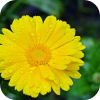
Calendula officinalis
Calendula
A
12 to 24
Yello/Orange/Cream

Centaurea cyanus
Bachelor Button
A
12 to 36
Blue or Mix
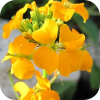
Cheiranthus allionii
Siberian Wallflower
B/P
10 to 18
Orange

Coreopsis tinctoria
Plains Coreopsis
A
12 to 36
Yellow-Maroon
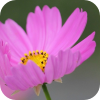
Cosmos bipinnatus
Cosmos
A
36 to 60
White/Pink/Crimson/Rose

Delphinium ajacis
Rocket Larkspur
A
12 to 36
White/Pink/Blue/Violet

Dimorphotheca aurantiaca
African Daisy
A
8 to 16
Orange/Salmon/White

Eschscholtzia californica
California Poppy
TP
12 to 18
Yellow/Orange

Gaillardia pulchella
Indian Blanket
A
12 to 24
Yellow-Red

Gilia tricolor
Bird's Eyes
A
12 to 18
Lavender-White

Gypsophila elegans
Baby's Breath
A
8 to 18
White
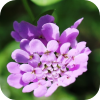
Iberis umbellata
Candytuft
A
12 to 18
White/Pink/Violet

Linaria maroccana
Spurred Snapdragon N. Lights
A
12 to 124
Pink/Yellow/Violet

Linum grandiflorum rubrum
Scarlet Flax
A
12 to 36
Scarlet

Lobularia maritima
Sweet Alyssum
TP
8 to 16
White

Lupinus hartwegii
Lupine
A
12 to 24
Mix

Oenothera lamarckiana
Evening Primrose
B/P
24 to 60
Yellow

Papaver rhoeas
Corn Poppy
A
12 to 30
White/Pink/Red

Phacelia campanularia
California Bluebells
A
8 to 20
Blue

Rudbeckia hirta
Black Eyed Susan
A/B/P
12 to 36
Yellow

Silene armeria
Catchfly
A/B
16 to 22
Pink
Wildflowers - All Perennial Scatter Garden Seed Mix
From $499 USDUnit price /UnavailableDescription
 Includes a mix of 16 popular perennial flower varieties and colors. Scatter this mix of seeds in your garden and enjoy a beautiful assortment of flowers for multiple years.
Includes a mix of 16 popular perennial flower varieties and colors. Scatter this mix of seeds in your garden and enjoy a beautiful assortment of flowers for multiple years.A perennial plant or simply perennial is a plant that lives for more than two years. The term is often used to differentiate a plant from shorter-lived annuals and biennials. Wikipedia
Wildflower establishment requires some important steps:- Site selection/preparation: It's important to address competition from weeds: pull, till, or use organic herbicides. If planting in the spring/summer you can wait for weeds to germinate, control and then plant the wildflower seeds.
- Seeding: You will want to have good seed to soil contact, broadcasting by hand is a good approach on small plot, may want to mix with an inert carrier, sand or other. Raking in and covering with soil 2-3 times seed thickness.
- Watering: During establishment for the first month, can be from rain in spring or supplement with irrigation.
- Timing: The best time to plant is in spring to early summer and even again in late fall.
This mix includes all of the following seed varieties:GENUS/SPECIES
COMMON NAME
HEIGHT
COLOR

Achillea millefolium
White Yarrow
24-36"
W

Aquilegia vulgaris
Columbine
10-18"
R/V/B

Aster novae angliae
New England Aster
24-36"
B/P/W/P

Cheiranthus allionii
Siberian Wallflower
10-18"
O

Chrysanthemum maximum
Shasta Daisy
16-24"
W

Coreopsis lanceolata Dwarf
Lance-Leaf Coreopsis
18-36"
Y

Dianthus barbatus
Sweet William
12-24"
W/P/R

Echinacea purpurea
Purple Coneflower
24-36"
P

Gaillardia aristata
Blanketflower
18-30"
Y/R

Liatris spicata
Gayfeather
24-48"
P

Linum lewisii
Blue Flax
18-30"
B

Lupinus perennis
Lupine
12-36"
B

Oenothera missouriensis
Dwarf Evening Primrose
8-12"
Y

Ratibida columnifera
Mexican Hat
12-36"
R/Y

Ratibida columnifera
Prairie Coneflower
12-36"
Y

Rudbeckia hirta
Black Eyed Susan
18-30"
Y
W-White
R-Red
V-Violet
B-Blue
Y-Yellow
O-Orange
P-Purple
Wildflowers - Annual Cut Flower Scatter Garden Seed Mix
From $499 USDUnit price /UnavailableDescription
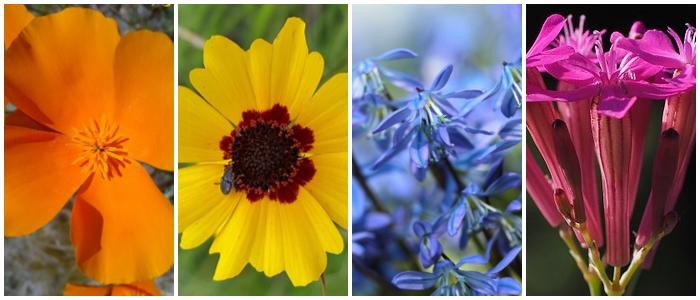 Includes a mix of 25 popular annual flower varieties that will produce a beautiful assortment of flowers suitable for cutting. The mix includes many of the flowers found in floral stores. This annual flower mix will blossom all-year-long creating a bountiful source of flowers.
Includes a mix of 25 popular annual flower varieties that will produce a beautiful assortment of flowers suitable for cutting. The mix includes many of the flowers found in floral stores. This annual flower mix will blossom all-year-long creating a bountiful source of flowers. Scatter this mix of seeds in your garden for the most beautiful assortment of flowers you've ever seen.
Wildflower establishment requires some important steps:- Site selection/preparation: It's important to address competition from weeds: pull, till, or use organic herbicides. If planting in the spring/summer you can wait for weeds to germinate, control and then plant the wildflower seeds.
- Seeding: You will want to have good seed to soil contact, broadcasting by hand is a good approach on small plot, may want to mix with an inert carrier, sand or other. Raking in and covering with soil 2-3 times seed thickness.
- Watering: During establishment for the first month, can be from rain in spring or supplement with irrigation.
- Timing: The best time to plant is in spring to early summer and even again in late fall.
This mix includes all of the following seed varieties:GENUS/SPECIES
COMMON NAME
TYPE
HEIGHT
COLOR

Callistephus chinensis
Aster
A
12 to 36
Blue/Pink/White/Purple
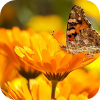
Calendual officinalis
Pot Marigold
A
12 to 24
Yellow/Orange/Cream

Centaurea cyanus
Bachelor Button, Polka Dot Mix
A
12 to 36
Mix

Clarkia amoena
Godetia
A
8 to14
Pink/White
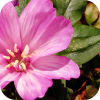
Clarkia elegans
Clarkia
A
18 to 30
Pink/Lavender

Coreopsis tinctoria
Plains Coreopsis
A
12 to 36
Yellow-Maroon

Cosmos bipinnatus
Cosmos, Dwarf Sensation
A
36 to 60
White/Pink/Crimson/Rose

Cynoglossum firmament
Chinese Forget Me Not
A/B
18 to 24
Blue

Delphinium ajacis
Larkspur
A
12 to 36
White/Pink/Blue/Violet

Dimorphotheca aurantiaca
African Daisy
A
8 to16
Orange/Salmon/White

Eschscholzia californica
Poppy, Mission Bells
TP
12 to 18
Yellow/Orange

Gaillardia pulchella
Annual Gaillardia
A
12 to 24
Yellow-Red

Gypsophila elegans
Baby's Breath
A
8 to 18
White

Helianthus annuus
Sunflower
A
24 to 72
Yellow

Helichrysum monstrosum
Strawflower mixed
A
24 to 36
Yellow/White/Red/Pink

Iberis umbellata
Candytuft
A
12 to 18
White/Pink/Violet

Lavateria trimestris mix
Tree mallow
A
24 to 48
White/Pink

Lobularia maritima
Alyssum, tall Sweet
TP
8 to 16
White

Oenotheria lamarckiana
Evening Primrose
B/P
24 to 60
Yellow

Papaver rhoeas
Shirley Poppy
A
12 to 30
White/Pink/red

Phacelia campanularia
California Bluebells
A
8 to 20
Blue

Rubeckia hirta
Black Eyed Susan
A/B/P
12 to 36
Yellow

Silene armeria
Catchfly
A/B
16 to 22
Pink

Tagetes erecta
Marigold
A
12 to 16
Yellow/Orange/Maroon

Zinnia elegans
Zinnia
A
12 to 36
White/Purple/Yellow/Orange.Red
A-Annual
75%
B-Biennial
18%
TP-Tender Perennial
7%
Wildflowers - Bee Scatter Garden Seed Mix
From $499 USDUnit price /UnavailableDescription
Plant this mix to attract bees and other beneficial pollinators. =)

Wildflower establishment requires some important steps:- Site selection/preparation: It's important to address competition from weeds: pull, till, or use organic herbicides. If planting in the spring/summer you can wait for weeds to germinate, control and then plant the wildflower seeds.
- Seeding: You will want to have good seed to soil contact, broadcasting by hand is a good approach on small plot, may want to mix with an inert carrier, sand or other. Raking in and covering with soil 2-3 times seed thickness.
- Watering: During establishment for the first month, can be from rain in spring or supplement with irrigation.
- Timing: The best time to plant is in spring to early summer and even again in late fall.Wildflowers - Beneficial Insect Garden Seed Mix
From $499 USDUnit price /UnavailableDescription
 Plant this mix to attract beneficial insects such as ladybugs, lacewings, ground beetles and other insects that feed on pests.
Plant this mix to attract beneficial insects such as ladybugs, lacewings, ground beetles and other insects that feed on pests.
Wildflower establishment requires some important steps:- Site selection/preparation: It's important to address competition from weeds: pull, till, or use organic herbicides. If planting in the spring/summer you can wait for weeds to germinate, control and then plant the wildflower seeds.
- Seeding: You will want to have good seed to soil contact, broadcasting by hand is a good approach on small plot, may want to mix with an inert carrier, sand or other. Raking in and covering with soil 2-3 times seed thickness.
- Watering: During establishment for the first month, can be from rain in spring or supplement with irrigation.
- Timing: The best time to plant is in spring to early summer and even again in late fall.
This mix includes all of the following seed varieties:GENUS/SPECIES
COMMON NAME
TYPE
HEIGHT
COLOR

Achillea millefolium
White Yarrow
P
12 to 36
White

Gypsophila elegans
Baby's Breath
A
8 to 18
White

Iberis umbellata
Candytuft
A
12 to 18
White/Pink/Violet
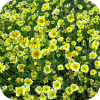
Layia platyglossa
Tidy Tips
A
6 to 12
Yellow-White

Lobularia maritima
Alyssum
TP
8 to 16
White

Nemophila menziesii
Baby Blue Eyes
A
4 to 12
Blue

Phacelia campanularia
California Bluebells
A
8 to 20
Blue

Trifolium repens
White Dutch Clover
P
4 to 10
White
Annual
50%
Perennial
50%
Wildflowers - Blues Brothers Seed Mix
From $499 USDUnit price /UnavailableDescription
Plant this mix to grow some of the most beautiful blue-colored flowers you've ever seen!
Wildflower establishment requires some important steps:
- Site selection/preparation: It's important to address competition from weeds: pull, till, or use organic herbicides. If planting in the spring/summer you can wait for weeds to germinate, control and then plant the wildflower seeds.
- Seeding: You will want to have good seed to soil contact, broadcasting by hand is a good approach on small plot, may want to mix with an inert carrier, sand or other. Raking in and covering with soil 2-3 times seed thickness.
- Watering: During establishment for the first month, can be from rain in spring or supplement with irrigation.
- Timing: The best time to plant is in spring to early summer and even again in late fall.
This mix includes all of the following seed varieties:
GENUS/SPECIES COMMON NAME TYPE HEIGHT COLOR 
Centaurea cyanus Bachelor Button, Jubilee Gem or Cornflower Annual 12- 36 Inches Blue 
Centaurea cyanus Chinese Forget-Me-Not or Chinese Hounds Tongue Perennial 18-24 Inches Blue 
Linum lewisii Blue Flax Perennial 18-30 Inches Blue 
Ipomoea alba Morning Glory, Heavenly Blue Annual 8 - 10 Feet Blue 
Lupinus angustifolius Blue Lupine Perennial 12-13 Inches Blue 
Phacelia campanularia California Blue Bells, Desertbells, Desert Bluebells, California-Bluebell, Desert Scorpionweed, and Desert Canterbury Bells. Annual 18-20 Inches Blue 
Nigella damascena Love In a Mist Annual 15 Inches Blue 
Gilia capitata Globe Gilia, Blue-Thimble-Flower, Bluehead Gilia, or Blue Field Gilia Annual 12-24 Inches Blue 
Nemophila menziesii Baby Blue Eyes Annual 6 Inches Blue Wildflowers - California Native Scatter Garden Seed Mix
From $499 USDUnit price /UnavailableDescription
 Includes a mix of 24 popular Native California Wildflower varieties. Scatter this mix in your garden and enjoy a beautiful assortment of Native California Wildflowers.Wildflower establishment requires some important steps:- Site selection/preparation: It's important to address competition from weeds: pull, till, or use organic herbicides. If planting in the spring/summer you can wait for weeds to germinate, control and then plant the wildflower seeds.
Includes a mix of 24 popular Native California Wildflower varieties. Scatter this mix in your garden and enjoy a beautiful assortment of Native California Wildflowers.Wildflower establishment requires some important steps:- Site selection/preparation: It's important to address competition from weeds: pull, till, or use organic herbicides. If planting in the spring/summer you can wait for weeds to germinate, control and then plant the wildflower seeds.
- Seeding: You will want to have good seed to soil contact, broadcasting by hand is a good approach on small plot, may want to mix with an inert carrier, sand or other. Raking in and covering with soil 2-3 times seed thickness.
- Watering: During establishment for the first month, can be from rain in spring or supplement with irrigation.
- Timing: The best time to plant is in spring to early summer and even again in late fall.
This mix includes all of the following seed varieties:GENUS/SPECIES
COMMON NAME
TYPE
COLOR
Height

Achillea millefolium
White Yarrow
P
White
12 to 36

Alyssum maritimum
Sweet Alyssum
A
White
8 to 16

Centaurea cyanus
Cornflower
A
Blue
12 to 36

Cheiranthus allionii
Siberian Wallflower
B
Orange
10 to 18

Chyrsanthemum coronarium
Garland Daisy
A
White/Yellow
36 to 48

Chrysanthemum maximum
Shasta Daisy
P
White
16 to 24

Clarkia amoena
Farewell To Spring
A
Pink/White
8 to 14

Clarkia elegans
Clarkia
A
Pink/White
18 to 30

Coreopsis lanceolata
Lance-Leaf Coreopsis
P
Yellow
18 to 36

Coreopsis tinctoria
Plains Coreopsis
A
Yellow
12 to 36

Cynoglossum firmament
Chinese Forget Me Not
A
Blue
18 to 24

Delphinuim consolida
Larkspur
A
Mix
12 to 36

Eschscholtzia californica
California Poppy
A
Orange
12 to 18

Gypsophila elegans
Annual Baby's Breath
A
White
8 to 18

Linaria maroccana
Spurred Snapdragon
A
Mix
12 to 24

Linum lewisii
Blue Flax
P
Blue
18 to 30
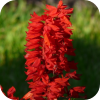
Linum grandiflorum rubrum
Scarlet Flax
A
Scarlet
12 to 36
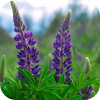
Lupinus perennis
Perennial Lupine
P
Blue
12 to 36

Nemophila menziesii
Baby Blue Eyes
A
Blue
4 to 12

Oenothera lamarckiana
Evening Primrose
B
Yellow
24 to 36

Papaver rhoeas
Corn Poppy
A
Red/Pink
12 to 30

Phacelia campanularia
California Bluebell
A
Blue
8 to 20

Rudbeckia hirta
Black Eyed Susan
B
Gold
12 to 36

Silene armeria
Catchfly
A
Purple
16 to 22
A = ANNUL 74%
B = BIENNIAL 8%
P = PERENNIAL 18%
Wildflowers - Coneflower Scatter Garden Seed Mix
From $499 USDUnit price /UnavailableDescription
 Includes a mixture of 6 popular coneflower varieties. Scatter this mix in your garden and enjoy a beautiful assortment of coneflowers!
Includes a mixture of 6 popular coneflower varieties. Scatter this mix in your garden and enjoy a beautiful assortment of coneflowers!Wildflower establishment requires some important steps:
- Site selection/preparation: It's important to address competition from weeds: pull, till, or use organic herbicides. If planting in the spring/summer you can wait for weeds to germinate, control and then plant the wildflower seeds.
- Seeding: You will want to have good seed to soil contact, broadcasting by hand is a good approach on small plot, may want to mix with an inert carrier, sand or other. Raking in and covering with soil 2-3 times seed thickness.
- Watering: During establishment for the first month, can be from rain in spring or supplement with irrigation.
- Timing: The best time to plant is in spring to early summer and even again in late fall.
This mix includes all of the following seed varieties:GENUS/SPECIES
COMMON NAME

Echinacea purpurea
Purple Coneflower

Echinacea palladia
Pale Purple Coneflower

Rudbeckia amplexicaulis
Clasping Coneflower

Ratibida columnifera
Red Mexican Hat

Ratibida columnifera
Yellow Prairie Coneflower

Ratibida pinnata
Greyheaded Coneflower
Wildflowers - Cosmos Flower Scatter Garden Seed Mix
From $499 USDUnit price /UnavailableDescription
Includes a mix of 7 popular cosmos flower varieties. Scatter this mix in your garden and enjoy a beautiful assortment of cosmos flowers!
Wildflower establishment requires some important steps:
- Site selection/preparation: It's important to address competition from weeds: pull, till, or use organic herbicides. If planting in the spring/summer you can wait for weeds to germinate, control and then plant the wildflower seeds.
- Seeding: You will want to have good seed to soil contact, broadcasting by hand is a good approach on small plot, may want to mix with an inert carrier, sand or other. Raking in and covering with soil 2-3 times seed thickness.
- Watering: During establishment for the first month, can be from rain in spring or supplement with irrigation.
- Timing: The best time to plant is in spring to early summer and even again in late fall.
This mix includes all of the following seed varieties:GENUS/SPECIES
COMMON NAME
Cosmos bippinatus
Cosmos, Sensation Mix
Cosmos bippinatus
Dazzler
Cosmos bippinatus
Gloria
Cosmos bippinatus
Picotee
Cosmos bippinatus
Pinkie
Cosmos bippinatus
Purity
Cosmos sulphureus
Sulphur Cosmos
Wildflowers - Deer Resistant Scatter Garden Seed Mix
From $499 USDUnit price /UnavailableDescription
 Includes a mix of the 22 of the most popular flower varieties that deer are known to stay away from. Scatter this mix of seeds in your garden and keep the deer away.Wildflower establishment requires some important steps:- Site selection/preparation: It's important to address competition from weeds: pull, till, or use organic herbicides. If planting in the spring/summer you can wait for weeds to germinate, control and then plant the wildflower seeds.
Includes a mix of the 22 of the most popular flower varieties that deer are known to stay away from. Scatter this mix of seeds in your garden and keep the deer away.Wildflower establishment requires some important steps:- Site selection/preparation: It's important to address competition from weeds: pull, till, or use organic herbicides. If planting in the spring/summer you can wait for weeds to germinate, control and then plant the wildflower seeds.
- Seeding: You will want to have good seed to soil contact, broadcasting by hand is a good approach on small plot, may want to mix with an inert carrier, sand or other. Raking in and covering with soil 2-3 times seed thickness.
- Watering: During establishment for the first month, can be from rain in spring or supplement with irrigation.
- Timing: The best time to plant is in spring to early summer and even again in late fall.
This mix includes all of the following seed varieties:GENUS/SPECIES
COMMON NAME
TYPE
HEIGHT
COLOR

Achillea millefolium
Yarrow
P
12 to 36
White

Aquilegia caerulea
Columbine
p
24 to 36
Yellow'/Red/Violet/Blue

Centaurea cyanus
Bachelor Buttons
A
12 to 36
Blue or Mix

Chrysanthemum maximum
Shasta Daisy
P
16 to 24
White

Clarkia amoena
Godetia
A
8 to 14
Pink/White

Coreopsis lanceolata
Lance Leaf Coreopsis
P
18 to 36
Yeloow

Delphinium consolida
Larkspur
A
12 to 36
Whie/Pink/Blue/Violet

Digitalis purpurea
Foxglove
B/P
24 to 48
Purple/Cream

Echinacea purpurea
Purple Coneflower
P
24 to 36
Purple

Eschscholzia californica
California Poppy
TP
12 to 18
Yellow/Orange

Gaillardia aristata
Blanketflower
P
18 to 30
Yellow-Red

Iberis umbellata
Candytuft
A
12 to 18
White/Pink/Violet

Liatris spicata
Gayfeather
P
24 to 48
Purple

Lupinus perennis
Lupine
P
12 to 36
Blue

Monarda citriodora
Lemon Mint
A
12 to 24
Lavander/White

Papaver rhoeas
Red shirley poppy
A
12 to 30
Red

Papaver rhoeas
Mixed Shirley Poppy
A
12 to 30
White/Pink/Red

Ratibida columnifera
Red Prairie Coneflower
B/P
12 to 36
Red/Yellow

Ratibida columnifera
Yellow Prairie Coneflower
B/P
12 to 36
Yellow

Rudbeckia hirta
Black Eyed Susan
A/B/P
12 to 36
Yellow

Salvia coccinea
Scarlet Sage
A/P
12 to 24
Red

Viscaria occulata
Soapwort
A
9 to 12
Pink
Annual
41%
PERENNIAL
59%
Wildflowers - Dryland Scatter Garden Seed Mix
From $499 USDUnit price /UnavailableDescription
 Includes a mix of 21 different beautiful flower varieties. Cover dry spaces with drought tolerant wildflowers! Mix includes annuals and perennials. Easy to grow and require little maintenance
Includes a mix of 21 different beautiful flower varieties. Cover dry spaces with drought tolerant wildflowers! Mix includes annuals and perennials. Easy to grow and require little maintenance
Wildflower establishment requires some important steps:- Site selection/preparation: It's important to address competition from weeds: pull, till, or use organic herbicides. If planting in the spring/summer you can wait for weeds to germinate, control and then plant the wildflower seeds.
- Seeding: You will want to have good seed to soil contact, broadcasting by hand is a good approach on small plot, may want to mix with an inert carrier, sand or other. Raking in and covering with soil 2-3 times seed thickness.
- Watering: During establishment for the first month, can be from rain in spring or supplement with irrigation.
- Timing: The best time to plant is in spring to early summer and even again in late fall.This mix includes the following:
Genus/Species
Common Name
HEIGHT
TYPE
COLOR

Centaurea cyanus
Cornflower
36"
A
Blue

Cheiranthus allionii
Siberian Wallflower
18"
B
Orange

Chrysanthemum maximum
Shasta Daisy
36"
P
White
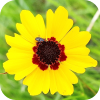
Coreopsis tinctoria
Plains Coreopsis
36"
A
Yellow/Red

Dianthus barbatus
Sweet William
24"
B
Mix

Dimorphotheca auranantiaca
African Daisy
12"
A
Yellow

Echinacea purpurea
Purple Coneflower
36"
P
Purple

Eschscholtzia californica
California Poppy
12"
A
Orange

Gaillardia aristata
Perennial Gaillardia
24"
P
Yellow/Red

Gaillardia pulchella
Annual Gaillardia
24"
A
Yellow/Red

Gypsophila elegans
Annual Baby's Breath
24"
A
White

Linaria maroccana
Spurred Snapdragon
24"
A
Mix

Linum lewisii
Blue Flax
24"
P
Blue

Lobularia maritima
Sweet Alyssum
10"
A
White

Oenothera lamarckiana
Evening Primrose
36"
B
Yellow

Papaver rhoeas
Corn Poppy
24"
A
Red

Penstemon strictus
Rocky Mtn. Penstemon
36"
P
Blue

Ratibida columnifera
Prairie Coneflower
24"
P
Red

Rudbeckia hirta
Black Eyed Susan
36"
A/B/P
Gold

Rudbeckia hirta
Gloriosa Daisy
36"
A/B/P
Yellow/Red

Silene armeria
Catchfly
18"
A
Pink
ANNUAL
64%
BI-ANNUAL
11%
PERENNIAL
25%
Wildflowers - Exotic Mountain Scatter Garden Seed Mix
From $499 USDUnit price /UnavailableDescription
 Includes a mix of 17 of the most vibrant and beautiful flower varieties you've ever seen. Scatter this mix in your garden. Specifically for elevations above 7,000 feet in western continental U.S.Wildflower establishment requires some important steps:- Site selection/preparation: It's important to address competition from weeds: pull, till, or use organic herbicides. If planting in the spring/summer you can wait for weeds to germinate, control and then plant the wildflower seeds.
Includes a mix of 17 of the most vibrant and beautiful flower varieties you've ever seen. Scatter this mix in your garden. Specifically for elevations above 7,000 feet in western continental U.S.Wildflower establishment requires some important steps:- Site selection/preparation: It's important to address competition from weeds: pull, till, or use organic herbicides. If planting in the spring/summer you can wait for weeds to germinate, control and then plant the wildflower seeds.
- Seeding: You will want to have good seed to soil contact, broadcasting by hand is a good approach on small plot, may want to mix with an inert carrier, sand or other. Raking in and covering with soil 2-3 times seed thickness.
- Watering: During establishment for the first month, can be from rain in spring or supplement with irrigation.
- Timing: The best time to plant is in spring to early summer and even again in late fall.
This mix includes all of the following seed varieties:GENUS/SPECIES
COMMON NAME
HEIGHT
TYPE
COLOR
Aquilegia caerulea
Columbine
24"-36"
P
Y, R, V, B

Centaurea cyanus
Cornflower
12"-36"
A
B or mix

Cheiranthus allionii
Siberian Wallflower
16"-24"
B/P
O

Chrysanthemum maximum
Shasta Daisy
16"-24"
P
W

Coreopsis tinctoria
Plains Coreopsis
12"-36"
A
Y, M

Dianthus barbatus
Sweet William
12"-24"
P
W,P,R

Dimorphotheca aurantiaca
African Daisy
8"-16"
A
O,S,W

Eschscholtzia californica
California Poppy
12"-18"
A
Y,O

Gaillardia aristata
Perennial Gaillardia
18"-30"
PA
Y,R
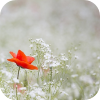
Gypsophila elegans
Annual Baby's Breath
8"-18"
P
W

Linum lewisii
Blue Flax
18"-30"
B/P
B

Lobularia maritima
Sweet Alyssum
8"-16"
P
W

Oenothera lamarckiana
Evening Primrose
24"-60"
B/P
Y

Penstemon strictus
Rocky Mtn. Penstemon
24"-36"
P
B

Ratibida columnifera
Prairie Coneflower
12"-36"
B/P
R,Y

Rudbeckia hirta
Black Eyed Susan
12"-36"
A/B/P
Y

Silene armeria
Catchfly
16"-22"
A
P
A-Annual
52%
Y- YELLOW
P-Perennial
24%
R-Red
B-Biennal
24%
V-Violet
B-Blue
W-White
M-Maroon
O-Orange
P-Purple
S-Salmon
Wildflowers - Forever Pink Scatter Garden Seed Mix
From $499 USDUnit price /UnavailableDescription
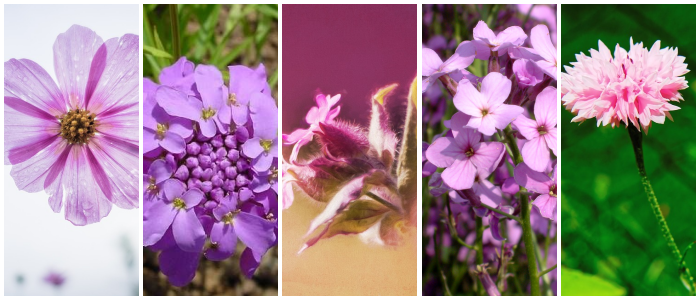 Includes a mix of 9 of the most vibrant and beautiful pink flower varieties. Scatter this mix in your garden and enjoy a beautiful assortment of pink flowers!Wildflower establishment requires some important steps:- Site selection/preparation: It's important to address competition from weeds: pull, till, or use organic herbicides. If planting in the spring/summer you can wait for weeds to germinate, control and then plant the wildflower seeds.
Includes a mix of 9 of the most vibrant and beautiful pink flower varieties. Scatter this mix in your garden and enjoy a beautiful assortment of pink flowers!Wildflower establishment requires some important steps:- Site selection/preparation: It's important to address competition from weeds: pull, till, or use organic herbicides. If planting in the spring/summer you can wait for weeds to germinate, control and then plant the wildflower seeds.
- Seeding: You will want to have good seed to soil contact, broadcasting by hand is a good approach on small plot, may want to mix with an inert carrier, sand or other. Raking in and covering with soil 2-3 times seed thickness.
- Watering: During establishment for the first month, can be from rain in spring or supplement with irrigation.
- Timing: The best time to plant is in spring to early summer and even again in late fall.
This mix includes all of the following seed varieties:GENUS/SPECIES
COMMON NAME
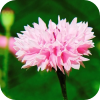
Centaurea cyanus
Cornflower Tall Pink
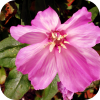
Clarkia amoena
Godetia Semi Dwf Mix

Cosmos bippinatus
Pinkie Dwarf
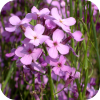
Hesperis matronalis
Purple Dame's Rocket

Iberis umbellata
Dwf. Candytuft Fairy Bqt.

Lavatera trimestris
Tree Mallow

Monarda citriodora
Lemon Mint

Silene armeria
Catchfly

Silene pendula
Nodding Catchfly
Wildflowers - Fragrant Flower Scatter Garden Seed Mix
From $499 USDUnit price /UnavailableDescription
 Includes a mix of 18 popular fragrant flower varieties and colors. Scatter this mix of seeds in your garden and enjoy the most fragrant flower assortment you've ever smelt.Wildflower establishment requires some important steps:- Site selection/preparation: It's important to address competition from weeds: pull, till, or use organic herbicides. If planting in the spring/summer you can wait for weeds to germinate, control and then plant the wildflower seeds.
Includes a mix of 18 popular fragrant flower varieties and colors. Scatter this mix of seeds in your garden and enjoy the most fragrant flower assortment you've ever smelt.Wildflower establishment requires some important steps:- Site selection/preparation: It's important to address competition from weeds: pull, till, or use organic herbicides. If planting in the spring/summer you can wait for weeds to germinate, control and then plant the wildflower seeds.
- Seeding: You will want to have good seed to soil contact, broadcasting by hand is a good approach on small plot, may want to mix with an inert carrier, sand or other. Raking in and covering with soil 2-3 times seed thickness.
- Watering: During establishment for the first month, can be from rain in spring or supplement with irrigation.
- Timing: The best time to plant is in spring to early summer and even again in late fall.
This mix includes all of the following seed varieties:GENUS/SPECIES
COMMON NAME
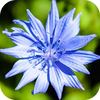
Centaurea cyanus
Cornflower
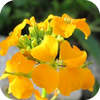
Cheiranthus allionii
Siberian Wallflower

Cynoglossum amabile
Chinese Forget Me Not

Dianthus barbatus
Sweet William
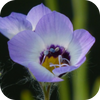
Gilia tricolor
Bird's Eyes

Iberis umbelleta
Candytuft

Lathyrus odoratus
Sweet Pea

Lavender Vera
Lavender

Lobularia maritima
Sweet Alyssum

Matthiola bicornis
Evening Scented Stock
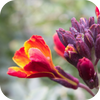
Mirabilis jalapa
Four O' Clock

Monarda punctata
Spotted Bee Balm
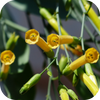
Nicotiana affinis
Tabacco mix
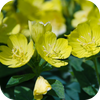
Oenothera lamarkiana
Evening Primrose

Reseda ordorata
Mignonette
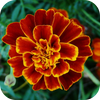
Tagetes patula
Marigold Sparky

Tropaeulum majus
Nasturtium

Viola cornuta
Helen Mount
Wildflowers - Hummingbird & Butterfly Scatter Garden Seed Mix
From $499 USDUnit price /UnavailableDescription
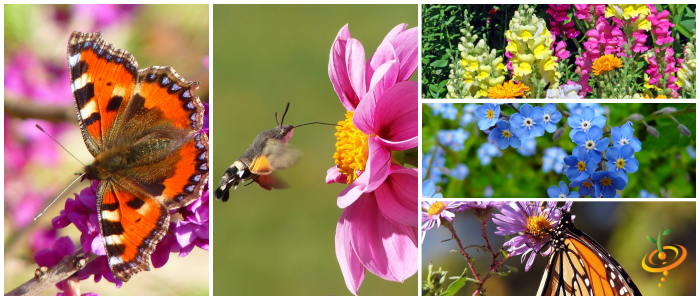
Includes a mix of the 23 of the most popular flower varieties known to attract Hummingbirds and Butterflies! Scatter this mix of seeds in your garden for the most beautiful assortment of flowers you've ever seen.
Wildflower establishment requires some important steps:
Site selection/preparation: It's important to address competition from weeds: pull, till, or use organic herbicides. If planting in the spring/summer you can wait for weeds to germinate, control and then plant the wildflower seeds.Seeding: You will want to have good seed to soil contact, broadcasting by hand is a good approach on small plot, may want to mix with an inert carrier, sand or other. Raking in and covering with soil 2-3 times seed thickness.Watering: During establishment for the first month, can be from rain in spring or supplement with irrigation.Timing: The best time to plant is in spring to early summer and even again in late fall.
This mix includes all of the following seed varieties:GENUS/ SPECIES
COMMON NAME
PLANT TYPE
PLANT HEIGHT (inches)
FLOWER COLORS
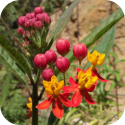
1. Asclepias tuberosa
Butterfly Milkweed
Perennial
24 to 36
Orange

2. Aquilegia caerulea
Mrs. Scott Elliot
Perennial
24 to 36
Yellow/Red/Violet/Blue

3. Antirrhinum tetra
Snapdragon
Annual
24 to 36
Lavender/Yellow/Pink/White

4. Callistephus chinensis
Aster
Annual
24 to 36
Blue/Pink/White/Purple

5. Cosmos bipinnatus
Cosmos Sensation Mix
Annual
36 to 60
White/Pink/Crimson/Rose
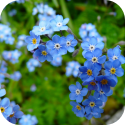
6. Cynoglossum amabile
Chinese Forget Me Not
Annual/
Biannual18 to 20
Blue

7. Delphinium consolida
Larkspur Giant Imperial Mix
Annual
12 to 26
White/Pink/Blue/Violet

8. Digitalis purpurea
Foxglove
Biannual/
Perrenial24 to 48
Purple/Cream

9. Gilia tricolor
Bird's Eyes
Annual
12 to 18
Lavender-White

10. Lavatera trimestris
Treemallow
Annual
24 to 48
White/Pink

11. Linaria maroccana
Toadflax
Annual
12 to 24
Pink/Yellow/Violet

12. Lobularia maritima
Alyssum, Carpet of Snow
Annual
8 to 16
White

13. Lychnis chalcedonica
Maltese Cross
Perennial
24 to 36
Scarlet

14. Mirabilis jalapa
Four O'clock
Tender
Perennial12 to 24
Red/Pink/Yellow.White
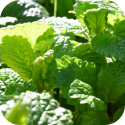
15. Monarda citriodora
Lemon Mint
Annual
12 to 24
Lavender/White

16. Nicotiana alata
Tobacco Plant
Annual
12 to 24
Red/White/Green/Yellow

17. Papaver rhoeas
Red Corn Poppy
Annual
12 to 30
Red

18. Penstemon strictus
Gloxinia Penstemon
Perennial
24 to 36
Blue

19. Salvia coccinea
Scarlet Sage
Annual/
Perennial12 to 24
Red

20. Silene armeria
Catchfly
Annual/
Biannual16 to 22
Pink
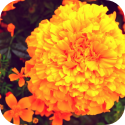
21. Tagetes erecta
Marigold Crackerjack
Annual
24 to 36
Yellow/Orange

22. Tropaeolum majus
Nasturtium Dwarf Jewel
Annual
12 to 36
Red/Yellow/Orange/Pink

23. Zinnia elegans
Zinnia
Annual
12 to 36
White/Purple/Yellow/Orange/Red
continue shopping
Featured Seed Types (A - Z)
view all




































































 Includes a mix of 21 popular annual flower varieties and colors. Scatter this mix of seeds in your garden and enjoy a beautiful assortment of flowers all year.
Includes a mix of 21 popular annual flower varieties and colors. Scatter this mix of seeds in your garden and enjoy a beautiful assortment of flowers all year.
























 Includes a mix of 25 popular annual flower varieties that will produce a beautiful assortment of flowers suitable for cutting. The mix includes many of the flowers found in floral stores. This annual flower mix will blossom all-year-long creating a bountiful source of flowers.
Includes a mix of 25 popular annual flower varieties that will produce a beautiful assortment of flowers suitable for cutting. The mix includes many of the flowers found in floral stores. This annual flower mix will blossom all-year-long creating a bountiful source of flowers. 





























 Plant this mix to attract beneficial insects such as ladybugs, lacewings, ground beetles and other insects that feed on pests.
Plant this mix to attract beneficial insects such as ladybugs, lacewings, ground beetles and other insects that feed on pests. 





















 Includes a mixture of 6 popular coneflower varieties. Scatter this mix in your garden and enjoy a beautiful assortment of coneflowers!
Includes a mixture of 6 popular coneflower varieties. Scatter this mix in your garden and enjoy a beautiful assortment of coneflowers!















 Includes a mix of 9 of the most vibrant and beautiful pink flower varieties. Scatter this mix in your garden and enjoy a beautiful assortment of pink flowers
Includes a mix of 9 of the most vibrant and beautiful pink flower varieties. Scatter this mix in your garden and enjoy a beautiful assortment of pink flowers









 Includes a mix of 18 popular fragrant flower varieties and colors. Scatter this mix of seeds in your garden and enjoy the most fragrant flower assortment you've ever smelt.
Includes a mix of 18 popular fragrant flower varieties and colors. Scatter this mix of seeds in your garden and enjoy the most fragrant flower assortment you've ever smelt.











































































































